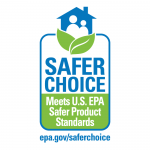Every day, online and on foot, we go shopping.
Whether we are stocking up on supplies for our homes or purchasing for the school or office, consumers are more aware of the dangers of toxic chemicals in the products they buy and use. We ask questions about the safety of those products and purchase carefully in the hope of avoiding the hazards that have been found in certain products.
We might even see labels that say “eco-friendly,” “all-natural,” or “sustainable.” While they might be comforting to see, they are not always supported with data from a credible independent agency.
 While Toxic-Free Future’s goal is to win strong regulations that keep hazardous chemicals out of products, the fact is that current federal rules do not ban cancer-causing and hormone-disrupting chemicals in most products.
While Toxic-Free Future’s goal is to win strong regulations that keep hazardous chemicals out of products, the fact is that current federal rules do not ban cancer-causing and hormone-disrupting chemicals in most products.
But the U.S. Environmental Protection Agency (EPA) has a program that helps protect you and your family today called “Safer Choice.” This program has proven successful in helping purchasers, retailers, product formulators, and ingredient manufacturers to move toward safer solutions in a way that federal regulation does not.
EPA’s Safer Choice helps consumers avoid dangerous chemicals in the products they buy.
How it works
Companies submit the full ingredient list in their products to Safer Choice for vetting. Nothing can violate the standard, including the “inert” ingredients or fragrance components. EPA also helps companies identify safer alternatives to problematic ingredients. EPA has also compiled and maintains a Safer Chemical Ingredient List that companies can choose from to meet the standard.
Safer Choice labels are helping to transform the marketplace. By giving consumers an assurance that a product avoids many known hazardous chemicals and has been vetted by the government, it also gives major brands and retailers incentive to reformulate their products with safer alternatives.
While the program historically has been limited to products like cleaning products, laundry detergents, and car cleaners, it does not yet evaluate some of the products we use everyday that raise deep concern – products like hand soaps, body wash, and shampoo that are among the most likely to cause human exposure to toxic chemicals.
Next steps for EPA’s Safer Choice
In multiple meetings with Safer Choice leadership, Toxic-Free Future encouraged expansion of this very successful program to other product categories with high potential for human exposure. When EPA requested stakeholder feedback on its proposal to expand the program, we were more than willing to weigh in and ask business and NGO partners to do the same.
Businesses and NGOs support Safer Choice expansion
A look at the comments submitted to the docket show that other NGOs and businesses also supported the expansion.
Beautycounter: “As participants in the Safer Choice program, businesses along the beauty and personal care value chain would join the unique, multi-stakeholder Safer Choice community—a forum that fosters cross-pollination of ideas and solutions to bring safer chemicals and products to market. Additionally, Safer Choice expansion into beauty and personal care would expand the public-facing Safer Choice Ingredient List (SCIL) to be increasingly representative of the chemical landscape relevant to the industry—supporting safer formulation innovation across the sector broadly.”
ChemFORWARD’s Know Better, Do Better (KBDB) Collaborative: “Adding beauty and personal care products into the Safer Choice program would meaningfully support consumers and institutional purchasers looking for best-in-class versions of these products. At the same time, the program would provide a valuable opportunity for personal care product manufacturers to demonstrate the safety of their products via EPA—a credible, authoritative entity with deep chemical safety expertise—allowing the same recognition cleaning product manufacturers benefit from today.”
National Retail Federation: “Retailers and consumers value the EPA Safer Choice and DfE certification programs. As retailers, we believe expanding the product categories that the programs cover will increase their value.”
Women’s Voices for the Earth: “There are numerous resources available online for salon workers offered by public health departments, occupational health specialists and non-profit organizations aimed at helping salon workers better protect their health from the products they are exposed to. What is most needed by salon workers are concrete solutions and suggestions of safer products to use.”
WeACT for Environmental Justice: “If the Safer Choice program expanded to personal care and cosmetic products, it would be easier for consumers to shop for safer beauty products, as they can simply look for that certification and know they’re using a Safer Choice product. Additionally, as advocates for health, it would be much easier for us to guide our community members on choosing safer products. We acknowledge other certification programs exist, and more stores are creating clean chemical pledges, but a federal program through the EPA would be most desirable for ensuring consumer trust.”
As we developed Toxic-Free Future’s formal comments, we reached out to NGO partners like the Environmental Working Group and WeACT for Environmental Justice and to businesses we’ve worked with like Sephora, Seventh Generation, and Beautycounter. In the end, we submitted a letter signed by 39 NGOs, businesses, and investor groups to the EPA encouraging the agency to expand Safer Choice to include cosmetics and personal care products.
We look forward to continued work with these groups and others to expand EPA’s Safer Choice program.





